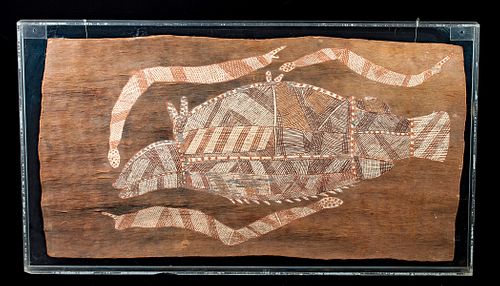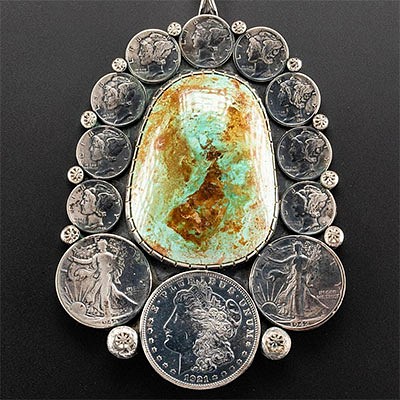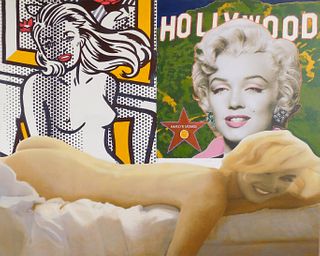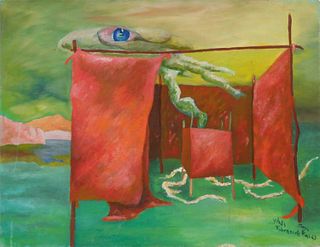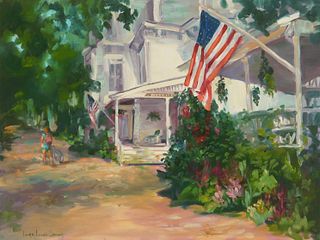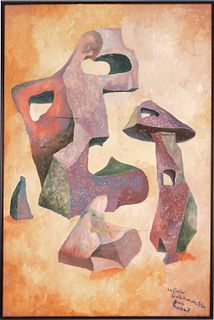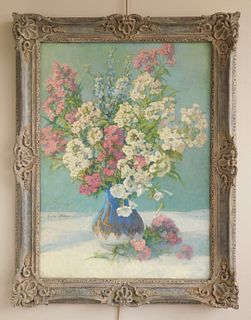19th C. Australian Aboriginal Bark Painting Barramundi
Lot 98
About Seller
Artemis Fine Arts
686 S Taylor Ave, Ste 106
Louisville, CO 80027
United States
Selling antiquities, ancient and ethnographic art online since 1993, Artemis Gallery specializes in Classical Antiquities (Egyptian, Greek, Roman, Near Eastern), Asian, Pre-Columbian, African / Tribal / Oceanographic art. Our extensive inventory includes pottery, stone, metal, wood, glass and textil...Read more
Estimate:
$600 - $900
Absentee vs Live bid
Two ways to bid:
- Leave a max absentee bid and the platform will bid on your behalf up to your maximum bid during the live auction.
- Bid live during the auction and your bids will be submitted real-time to the auctioneer.
Bid Increments
| Price | Bid Increment |
|---|---|
| $0 | $25 |
| $300 | $50 |
| $1,000 | $100 |
| $2,000 | $250 |
| $5,000 | $500 |
| $10,000 | $1,000 |
| $20,000 | $2,500 |
| $50,000 | $5,000 |
| $100,000 | $10,000 |
| $200,000 | $20,000 |
About Auction
By Artemis Fine Arts
Feb 25, 2021
Set Reminder
2021-02-25 10:00:00
2021-02-25 10:00:00
America/New_York
Bidsquare
Bidsquare : American Frontier | Ethnographic | Tribal Art
https://www.bidsquare.com/auctions/artemis-gallery/american-frontier-ethnographic-tribal-art-6449
Featuring historical examples from the American, Spanish, and Mexican frontiers, as well as Native American, Ethnographic, Tribal, Oceanic, Spanish Colonial, more. All items offered for sale have been legally acquired, are legal to sell and are guaranteed to be as described or your money back. Artemis Fine Arts info@artemisfinearts.com
Featuring historical examples from the American, Spanish, and Mexican frontiers, as well as Native American, Ethnographic, Tribal, Oceanic, Spanish Colonial, more. All items offered for sale have been legally acquired, are legal to sell and are guaranteed to be as described or your money back. Artemis Fine Arts info@artemisfinearts.com
- Lot Description
Oceania, Australia, probably western Arnhem Land, ca. 19th to early 20th century CE. An incredible sheet of eucalyptus bark painted using natural pigments to form a fantastical fish and three serpents. The fish is a barramundi, its body composed of intricate lines, curves, and dotted patterns in hues of red and white. Flanking the fish are three snakes which are likely water snakes known as kedjebe (Acrochordus arafurae). They are similarly decorated with intricate crosshatched lines. This painting was done in the traditional style of West Arnhem Land, which is part of the oldest continuous tradition of painting (from rock art to bark) known in the world. The colors are created from naturally occurring plants. A beautiful example that is displayed within a protective frame. Size of bark: 36" L x 19.5" H (91.4 cm x 49.5 cm); frame: 39" L x 2" W x 22" H (99.1 cm x 5.1 cm x 55.9 cm)
Fish and snakes played important roles in the cosmology and survival of the Aboriginals. The means "large-scaled silver fish" and is part of Dreamtime mythology involving a story of forbidden love and two humans changing into these fish. The kedjebe is a freshwater snake, found living in rivers, creeks, and billabongs (oxbow lakes), where it will burrow down into the mud. people wade out into the water during the dry season and reach into the mud to catch these non-venomous snakes. In the past, they would then kill them by taking the head in the mouth, biting it, and breaking the animal's neck.
Provenance: private New York collection
All items legal to buy/sell under U.S. Statute covering cultural patrimony Code 2600, CHAPTER 14, and are guaranteed to be as described or your money back.
A Certificate of Authenticity will accompany all winning bids.
We ship worldwide and handle all shipping in-house for your convenience.
#162397Chipping of pigments, especially lower areas of fish, but overall details are well preserved. Minor scratches and chips to peripheries of bark. Displayed in a protective frame.Condition
- Shipping Info
-
All shipping is handled in-house for your convenience. Your invoice from Artemis Gallery will include shipping calculation instructions. If in doubt, please inquire BEFORE bidding for estimated shipping costs for individual items.
-
- Buyer's Premium



 EUR
EUR CAD
CAD AUD
AUD GBP
GBP MXN
MXN HKD
HKD CNY
CNY MYR
MYR SEK
SEK SGD
SGD CHF
CHF THB
THB